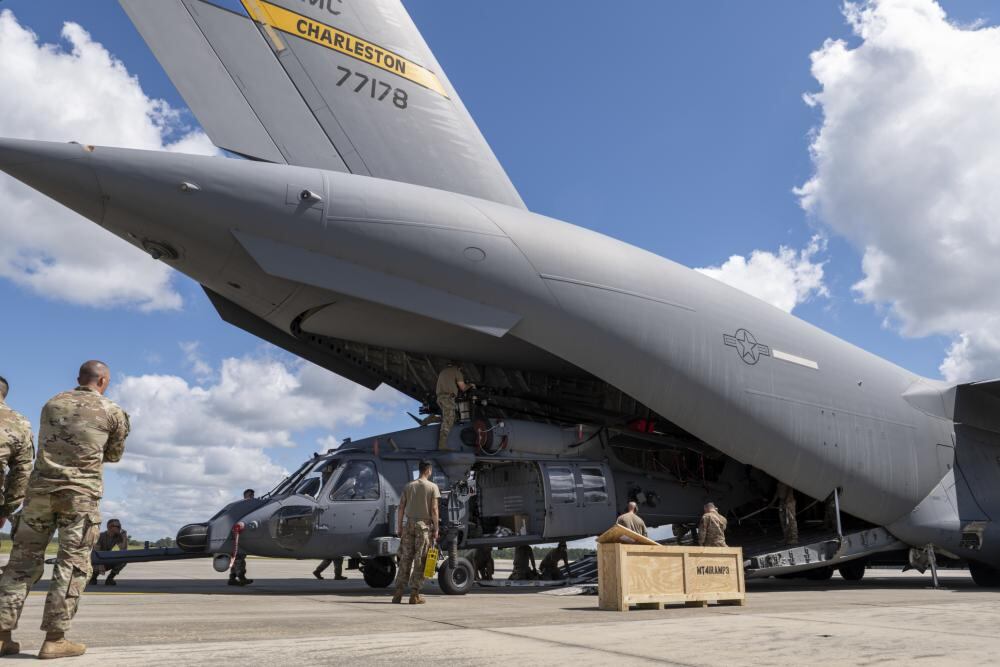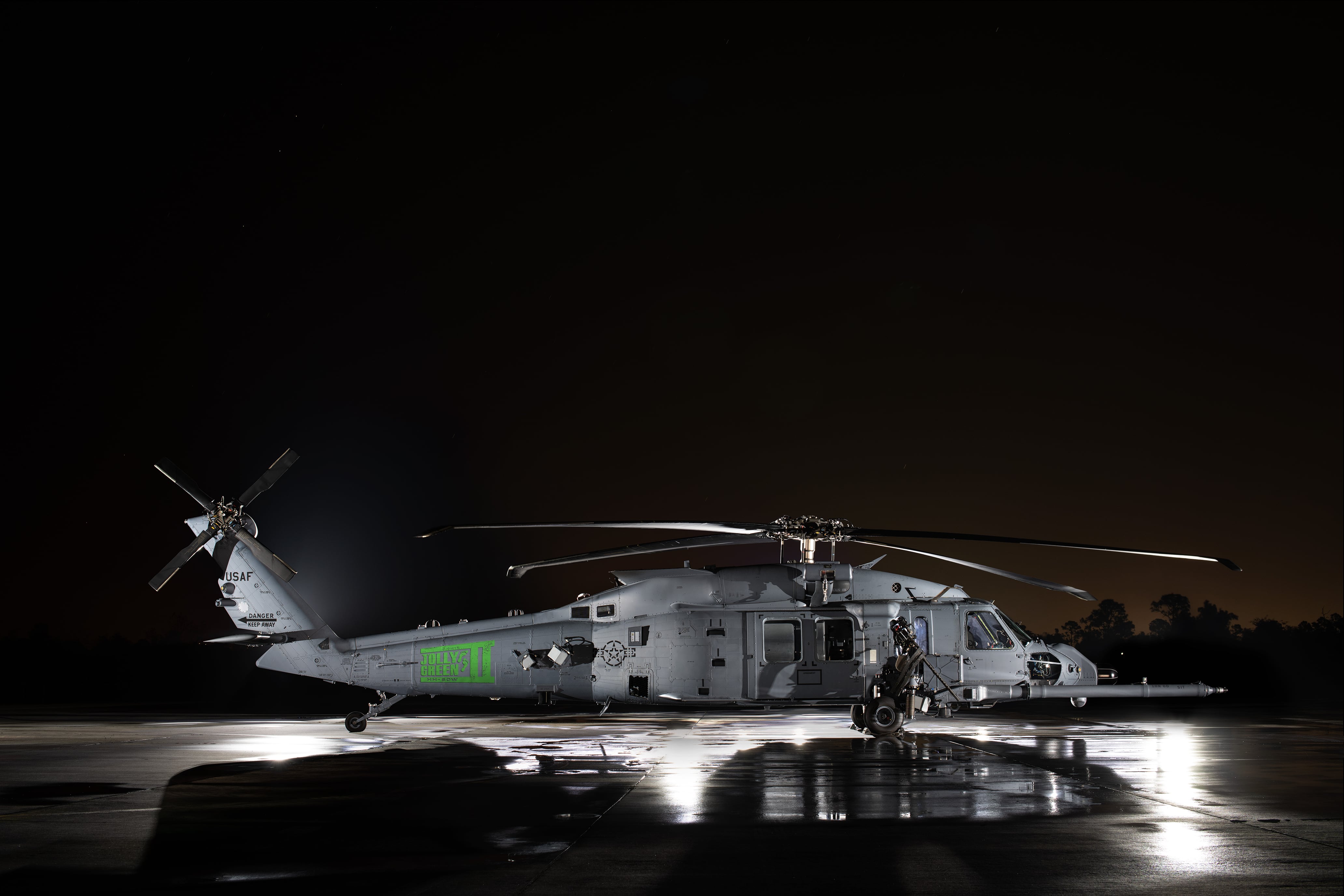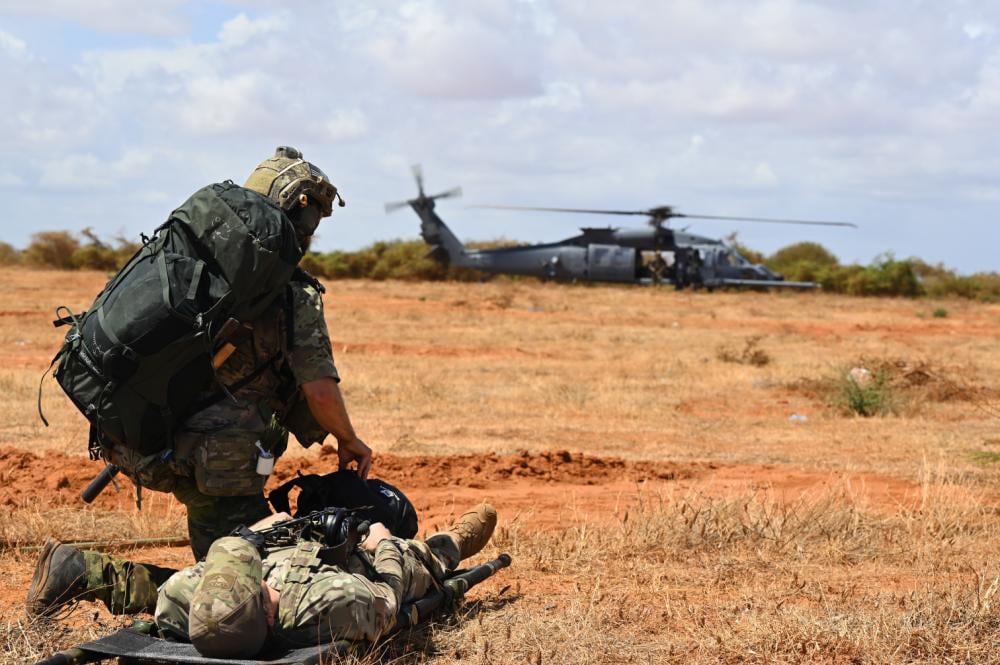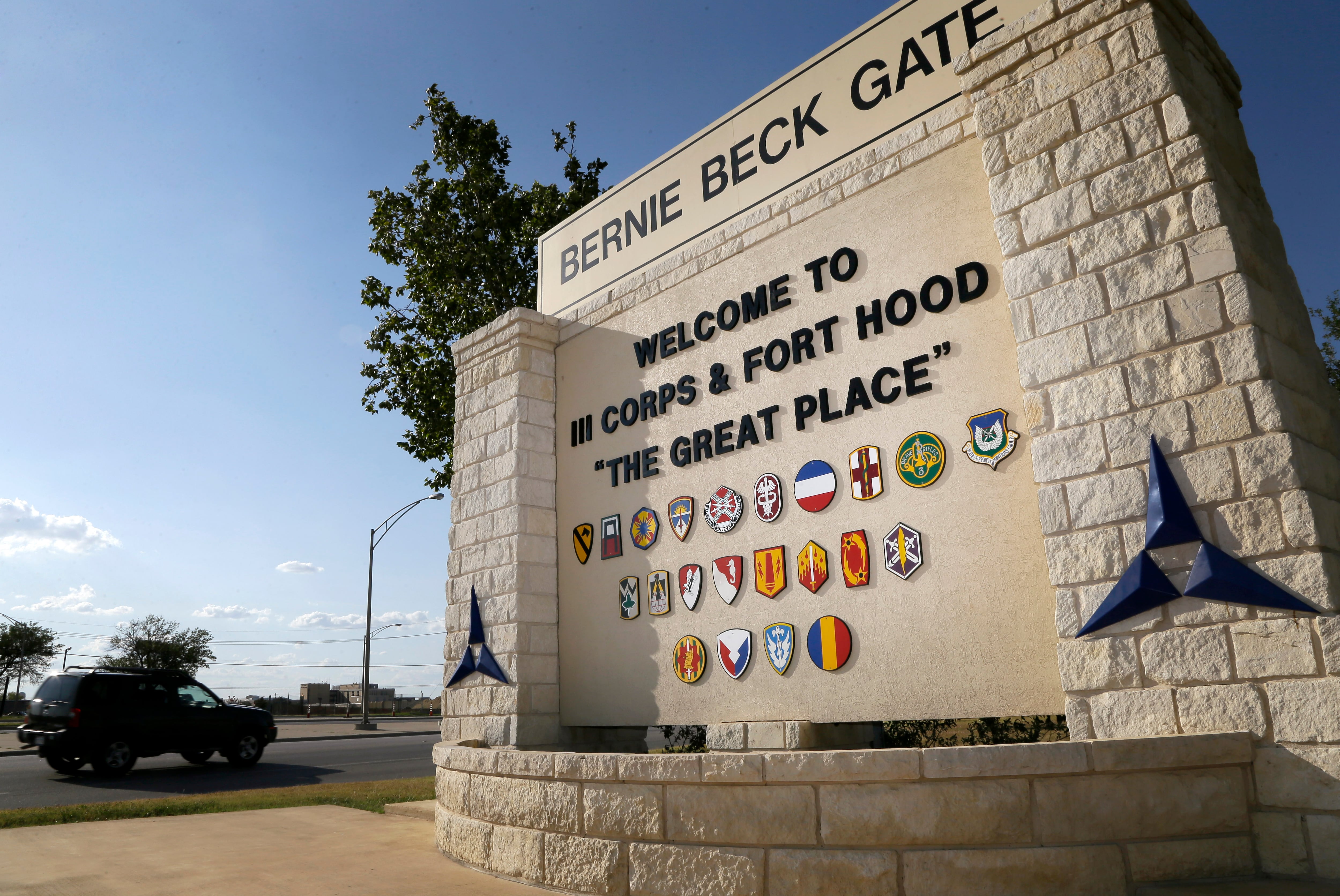The Air Force’s new search-and-rescue helicopter is proving its worth on its first combat deployment to Africa.
HH-60W Jolly Green II crews saved the lives of two foreign troops on a December rescue mission in the Horn of Africa, on the continent’s eastern shore, the service said Thursday.
It’s the first publicized instance of a real-world overseas save for the HH-60 “Whiskey” since it was declared combat-ready in October.
RELATED

According to a press release from the 435th Air Expeditionary Wing, rescue crews were on alert before dawn. They quickly picked up injured service members and left the area without incident.
“Pararescuemen performed their own stabilizing emergency medical care in the aircraft’s cabin,” the Air Force said.
Airmen headed for the nearest medical facility so that one of the wounded could undergo trauma surgery. HC-130J Combat King II planes, used to recover troops from the field, ferried the more seriously wounded person to another location for further treatment.
The Air Force did not provide details of the incident that caused the injuries.
“While personnel may be behind enemy lines, or far from needed support, this team is equipped to travel great distances and fight their way in and out if necessary to make the mission happen,” Personnel Recovery Task Force commander Lt. Col. Thaddeus Ronnau said in the release.
“Even in the vast expanses of Africa, this combined team was able to pull a critical patient from the battlefield with the Air Force’s newest rescue vehicle and place them in the hands of skilled trauma surgeons, ultimately saving two lives,” he said.
The HH-60Ws belong to the 449th Air Expeditionary Group at Camp Lemonnier. The group handles personnel recovery, regional airlift, base support, intelligence collection and airfield operations in support of U.S. Africa Command, U.S. Central Command and foreign militaries in East Africa.
U.S. troops have long been stationed in Djibouti to help stabilize countries in the region and support local militaries in the fight against terror groups like Al-Shabaab. Around 4,500 Americans currently live at Camp Lemonnier.
RELATED

HH-60W airmen deployed overseas for the first time on Sept. 24, though the Air Force did not say where the unit from Moody Air Force Base, Georgia, went or how long it would be gone. The Jolly Green II has been in eastern Africa since at least Dec. 8, 2022, when it conducted a casualty evacuation training exercise in Djibouti.
The Air Force is nearing the end of Jolly Green II production at manufacturer Sikorsky, a Lockheed Martin subsidiary. Procurement is projected to cost $4.1 billion.
The service asked Congress to cap the buy at 75 HH-60Ws — instead of 113 as initially planned — in its latest budget request as its post-Afghanistan priorities evolve. Lawmakers instead provided funding to buy an additional 10 helos, for an 85-piece fleet.
The Jolly Green II fleet, named for the HH-3 helicopters flown during the Vietnam War, can fly faster and farther than its predecessor and better withstand threats. Moody was the first Air Force ops base to receive the new airframes in November 2020.
They are expected to replace an earlier Sikorsky airframe, the HH-60G Pave Hawk, at several active duty and Air National Guard installations around the world. Airmen have flown Pave Hawks since the early 1980s in conflicts and emergencies from Panama to Afghanistan to Japan.
Rachel Cohen is the editor of Air Force Times. She joined the publication as its senior reporter in March 2021. Her work has appeared in the Washington Post, the Frederick News-Post (Md.), Air and Space Forces Magazine, Inside Defense, Inside Health Policy and elsewhere.





